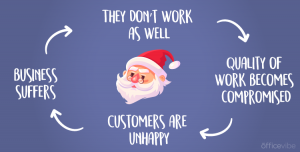B2B marketers will become growth drivers, and will own the all-important digital journey.
“For me, this is the best time to be a B2B marketer. It’s not only B2B marketing’s opportunity, but it’s B2B marketing’s responsibility to take back control of the buying cycle.” Forceful words from Nick Heys, CEO of Jabmo, a global ABM platform serving industrial and manufacturing businesses, bio-sciences and healthcare.
The opportunity described by Heys has been created against the backdrop of a pandemic — and an associated economic crisis — which has forced businesses across the full spectrum of digital maturity, to double down on digital marketing and sales strategies. To gauge the extent and significance of this transformation, we spoke not only to Heys, but to Stacy Greiner, an IBM and Cisco veteran who joined Dun & Bradstreet, the global business intelligence vendor, as CMO in March 2020, just as the pandemic tightened its grip.
Sales and marketing in alignment
Budgetary pressures, and the continuing trend towards ABM, is making upfront alignment with sales a necessity for B2B marketers. “We’ve seen that partnership become critical, and in 2021 is only going to continue to be even more critical: one go-to-market motion,” said Greiner.
“Before the pandemic,” Heys told us, “there were two big trends in our customers’ space. One was that the buying groups were getting bigger. We’ve had customers telling us that, ten years ago, they were selling million dollar deals to two or three people after playing golf; now they’re talking twenty, thirty, forty people involved in a buying decision. That was already a big trend, leading to a demand for account-based marketing. The other trend was buyers doing their own research anonymously, without filling in the web forms.” These trends have been apparent in technology purchasing space for several years; it’s significant that they’re now being seen in traditionally less digitally mature industries like manufacturing.
“It’s been several years now that B2B buyers have been doing the majority of their purchase decision-making online,” Greiner concurred. “Also, over the last few years, you’ve seen marketing be the stronger decision-makers in the overall martech-salestech stack itself; so even if they don’t own the overall budget for sales technology, I’ve seen them be the decision-makers over what that end-to-end stack looks like – because it needs to all integrate together.”
“Sales and marketing have long worked together on [in-person] events,” said Greiner. “Often an event is thought of as not necessarily lead generation but lead progression, and an opportunity to connect with your customers in person.” This year, she has observed much more collaboration on virtual events like webinars, which were more driven by product and marketing in the past. “What we’re seeing now is more an upfront collaboration with sales – let’s build this webinar together to help sales have more opportunities to interact in real time with prospects and customers.”
Digital laggards
Heys created Jabmo explicitly to offer the technology which supports ABM to businesses outside of the technology space. “When I founded this company, I noticed that most of our competitors were focused on the tech space – tech selling to tech,” he said. “I decided to focus the business on the manufacturing space, and in particular life sciences. That alone made us unique, because their requirements are quite different from tech. Tech tends to be very much focused on organic growth, driven by winning new names.”
Larger, well-established manufacturing companies expand in a different way, Heys explained. “They know who their target accounts are. They will typically expand, either by acquiring another company, or through research and development. This arms them with new products for their sales team to sell — to the known accounts, but often to different buyers within those accounts. They need to reach these new buyers, and that’s where we come in. We help complex sales organizations of larger, more mature companies, accelerate account expansion.”
There are other differences, of course, between manufacturing and technology. “In the manufacturing space, yes, they are what we would call ‘digital laggards,’ and very much reliant on trade shows, events and in-person meetings. Even marketing automation hadn’t taken off in that space a lot, because the pitch of ‘more leads’ didn’t really resonate with that audience. We’re really happy that there’s been a big change over the last six months, mainly because they didn’t have a choice. Manufacturers were forced to do something they probably were going to do over the next two to three years, over the last six months. This pandemic has been a great accelerator in digital marketing transformation for manufacturers.”
Greiner, too, has seen an accelerated drive towards digital transformation among businesses which, prior to 2020, were far from digital-first. “As organizations that have been less digitally savvy are coming up the curve,” she said, “they’re also looking for platforms that make it easy. If you look at the martech landscape, it’s hyper-fragmented, with best-of-breed tools to do every little niche of marketing that you can imagine. That’s a steep curve for companies that are trying to accelerate into digital transformation of marketing.”
Nevertheless, Greiner anticipates a trend of bringing as much of the digital journey as possible in-house. “For organizations that have not been embracing digital as fast as others, they relied a lot on out-sourcing to agencies: paid search to this agency, programmatic display to another agency, even out-sourcing SDRs, tele-sales, or even email. One of the opportunities digital gives you, because there’s so much data if you can harness it, is this ability to create a picture across this entire journey; and when you’re out-sourcing it to third-party players, not only is the message getting lost as it’s translated by people who aren’t living and breathing in the digital halls of your company – but also that journey is getting broken, because the hand-offs aren’t as clean.”
This opportunity is not just available to large business that are attemtping to accelerate digital maturity, but to small businesses too. “You can see small companies that have the ability to appear as nationwide, or even global organizations, just because they’re operating in that digital space. In a lot of ways, digital transformation has really leveled the playing field, assuming that your product or service can meet the need you generate online.”
A seat at the table in 2021
In 2021, said Heys, marketers are going to get a seat at the table. “They’re going to move from the back seat to being co-pilots with the sales organization – I think that’s new. They’re taking responsibility now for what the sales people can’t do, and that’s digital selling. ABM is all about digital selling: doing what sales people used to do on the golf course, in face-to-face meetings, and trade shows, is now being done through highly personalized, sequenced messaging.”
Heys predicted another trend, which he described as “dear to my heart as a marketer. “More and more responsibility for the marketing people to drive growth. Our customers’ space is typically very sales heavy; marketing has traditionally been there to do the trade shows and make the website look nice, but it’s never been a growth driver in the business.”
Greiner, based on conversations with her peers, believes that changes she instituted in the marketing organization at Dun & Bradstreet reflect a larger trend. “Historically, marketing has often been organized into functions – your email marketing team, your paid media team, your event team, your web team, etc,” she said. “One of the things we did early on was recognize that all those pieces are part of this journey, so we brought those skills together to bring one conversation to their prospects. That’s a trend I saw start this year, and I think that will continue to accelerate into 2021, because it brings the subject matter expertise and the agility into the teams that are carrying this conversation digitally to the people you’re trying to reach.”
If vaccination allows the re-opening of trade shows, and the general resumption of in-person contact, does that mean B2B marketers will simply revert to the strategies which served them in the past. Greiner doesn’t think so.
“I’m sure there’ll be some nostalgia, but I think we’ve figured out some creative and new ways of doing things.” One element Greiner highlights is a shift from B2B to B2P – business-to-person. “I think that’s something digital transformation has unlocked and continues to unlock. The tactics we have historically relied on have been more general, more account-level. We’re already on a trend toward the consumerization of the B2B buyer; the digital transformation in 2020 moved us further along that curve, towards where we’re really understanding, not just the businesses we want to do business with, but the specific people within those businesses. You need personal data in addition to business data. While those capabilities might have existed prior to 2020, I don’t think we really tapped into them.
This article first appeared on MarTech Today.
(73)








